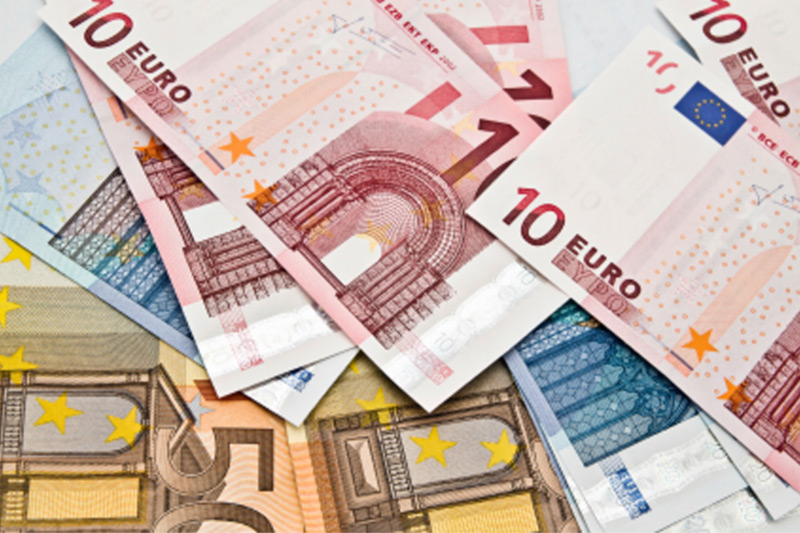Investing.com - The euro was steady against the dollar on Tuesday, as weak U.S. manufacturing data increased the chances for more easing by the Federal Reserve, while investors eyed the outcome of Thursday’s European Central Bank meeting.
During European late morning trade, the euro edged higher against the U.S. dollar, with EUR/USD inching up 0.08% to trade at 1.2586.
Sentiment on the dollar was hit after data on Monday showing that the U.S. manufacturing sector had contracted for the first time since July 2009 in June fuelled speculation that the U.S. central bank could implement a third round of quantitative easing to shore up growth.
The Institute for Supply Management said its index of U.S. manufacturing activity dropped to 49.7 in June, from 53.5 in May.
Investors were also eyeing the outcome of the ECB’s policy meeting on Thursday, amid growing expectations for a rate cut to help bolster growth in the bloc.
Data on Monday showed that the unemployment rate in the region rose to a record in May, while the manufacturing sector remained firmly in contraction territory in June.
The euro edged higher against the pound, with EUR/GBP rising 0.16% to trade at 0.8024.
Earlier Tuesday, data showed that construction activity in the U.K. fell at the fastest rate in two-and-a-half years in June, as output and new orders both fell.
The weak data added to speculation that the Bank of England will implement a fresh round of stimulus measures at Thursday’s meeting, after data on Monday showed that the U.K. manufacturing sector contracted for a second successive month in June.
The single currency strengthened against the yen, with EUR/JPY up 0.49% to 100.47, but remained little changed against the Swiss franc, with EUR/CHF inching up 0.01% to 1.2013.
The euro was mixed against the Canadian, Australian and New Zealand dollars, with EUR/CAD sliding 0.14% to hit 1.2771, EUR/AUD dipping 0.08% to hit 1.2260 and EUR/NZD easing up 0.08% to hit 1.5662.
The Australian dollar was little changed earlier after the Reserve Bank of Australia left its benchmark interest rate unchanged at 3.50%, in line with expectations.
Later Tuesday, the U.S. was to publish official data on factory orders.
During European late morning trade, the euro edged higher against the U.S. dollar, with EUR/USD inching up 0.08% to trade at 1.2586.
Sentiment on the dollar was hit after data on Monday showing that the U.S. manufacturing sector had contracted for the first time since July 2009 in June fuelled speculation that the U.S. central bank could implement a third round of quantitative easing to shore up growth.
The Institute for Supply Management said its index of U.S. manufacturing activity dropped to 49.7 in June, from 53.5 in May.
Investors were also eyeing the outcome of the ECB’s policy meeting on Thursday, amid growing expectations for a rate cut to help bolster growth in the bloc.
Data on Monday showed that the unemployment rate in the region rose to a record in May, while the manufacturing sector remained firmly in contraction territory in June.
The euro edged higher against the pound, with EUR/GBP rising 0.16% to trade at 0.8024.
Earlier Tuesday, data showed that construction activity in the U.K. fell at the fastest rate in two-and-a-half years in June, as output and new orders both fell.
The weak data added to speculation that the Bank of England will implement a fresh round of stimulus measures at Thursday’s meeting, after data on Monday showed that the U.K. manufacturing sector contracted for a second successive month in June.
The single currency strengthened against the yen, with EUR/JPY up 0.49% to 100.47, but remained little changed against the Swiss franc, with EUR/CHF inching up 0.01% to 1.2013.
The euro was mixed against the Canadian, Australian and New Zealand dollars, with EUR/CAD sliding 0.14% to hit 1.2771, EUR/AUD dipping 0.08% to hit 1.2260 and EUR/NZD easing up 0.08% to hit 1.5662.
The Australian dollar was little changed earlier after the Reserve Bank of Australia left its benchmark interest rate unchanged at 3.50%, in line with expectations.
Later Tuesday, the U.S. was to publish official data on factory orders.
